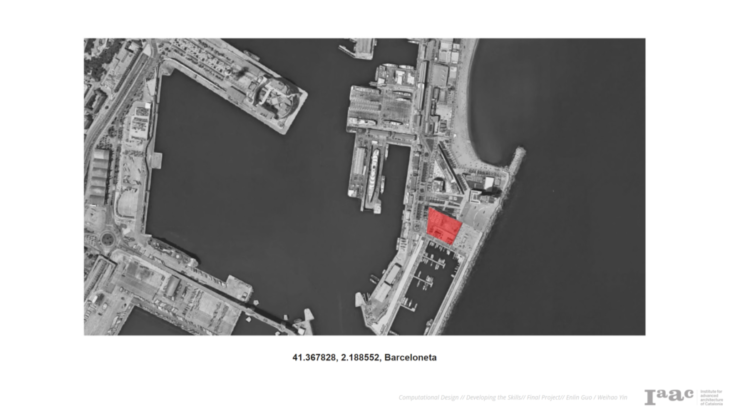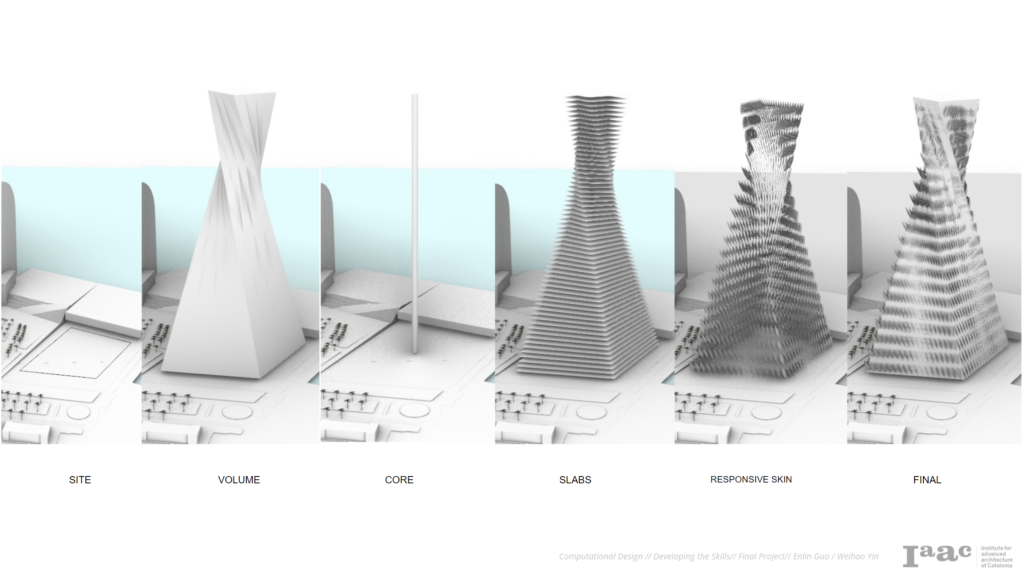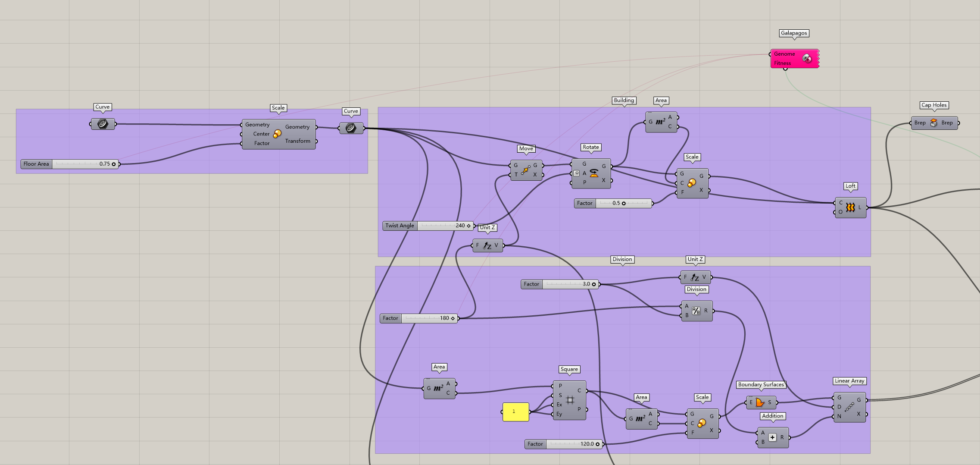Project Brief:
This project demonstrates the final study outcome of the MAA program (2021-2022)’s Computational Design course. The idea is to construct a tower structure, at any chosen site, whose shape and height are determined with galapagos based on the constraint of the context. Additionally, the tower also needs a responsive facade that reacts automatically to the orientation of the sun.
Site Location:
We choose to place our structure on a vacant slot on the tip of Barceloneta, south of the Hotel W.
Design Process:
We designed this project by determing the following elements step-by-step.
Optimization Outcomes:
The galapagos generated the following outcomes based on a series of fitness constraints, in cluding the floorarea, the height, and the twist angle.
The following are the parameters of the tower optimization process. Each of the three groups is responsible for: the maximum floor area (75%), the maximum twist angle (240 degrees), and the maximum height (185 meters, less than twice of the Hotel W).
A selection of the optimized outcomes includes the followings: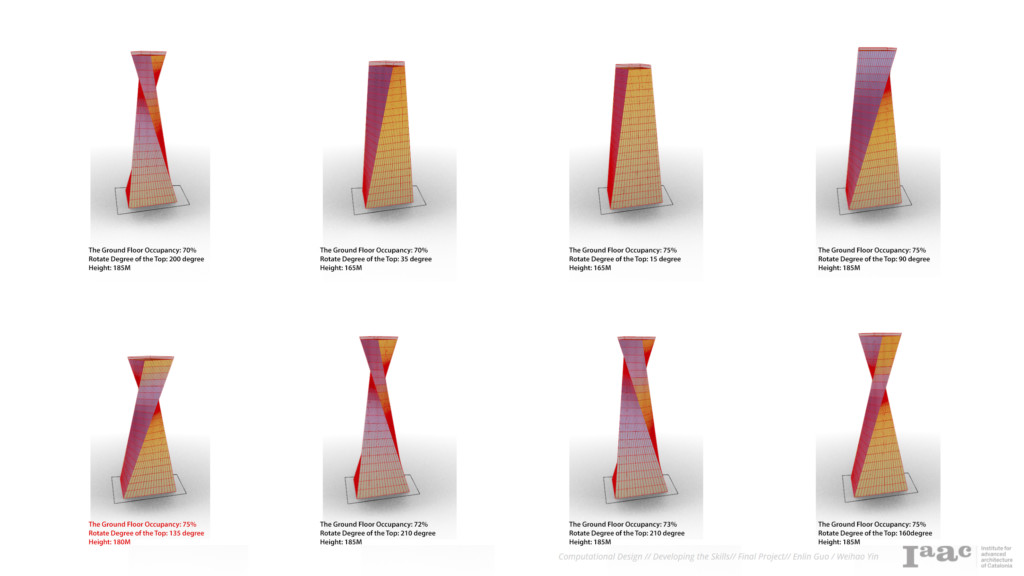
In the end, we decided to work with the result that has a stronger base and a moderately strong twist.
Tower Elements:
We then added the slabs (5 meters each floor), a verticle core of circulation, and four sides of the facade to the tower.
The components of the core and the slabs:

The components that divide up the four sides of the facade:
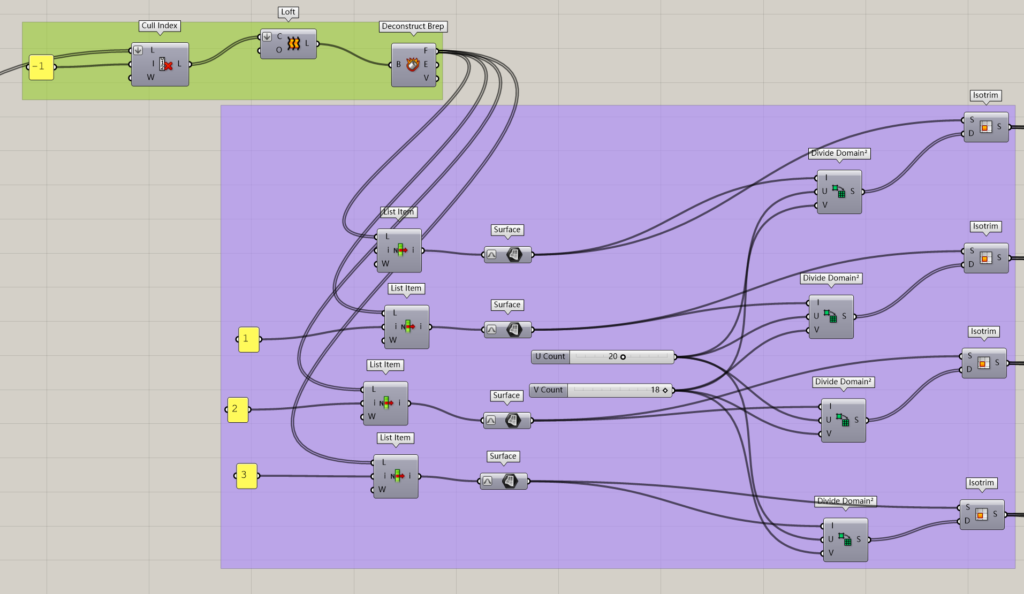
Note that a Cull Index element is alwasy used to remove the top floor of the tower, this is done to remove the potential discrepency in the data tree when the total height is divided by a certain floor height.
Responsive Facade:
The responsive facade is a series of diamond-shaped “windows” that rotates along a verticle plane that goes through their respective center.
The division of the facade is easily achieved by the Diamond Panels component from the LaunchBox addon.
We then made the facade “responsive” by deciding the angle of rotation for each of the diamond pieces based on their respective distance from the “sun”, which is played by an orb object that can move in an hemispherical space.
The sun path is simulated by:

The relation between the rotation angle of the windows and their distance from the sun:
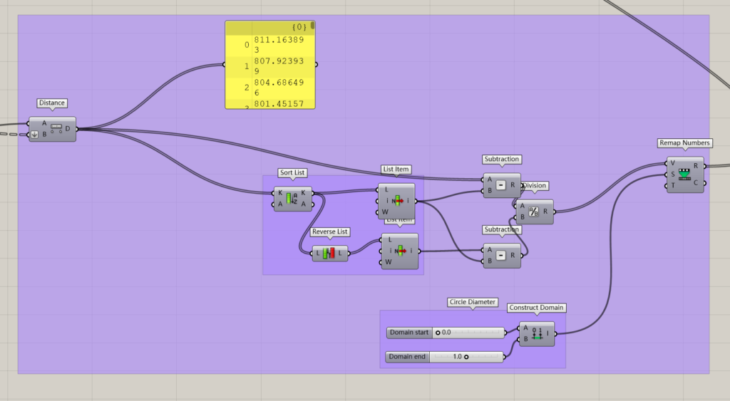
And the generation & the final result of the responsive facade:
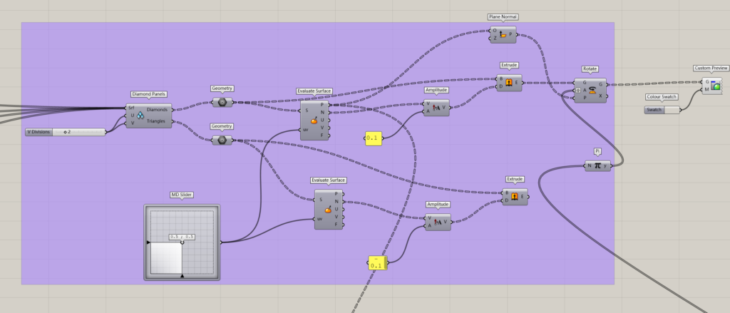
The effect of the rotation:
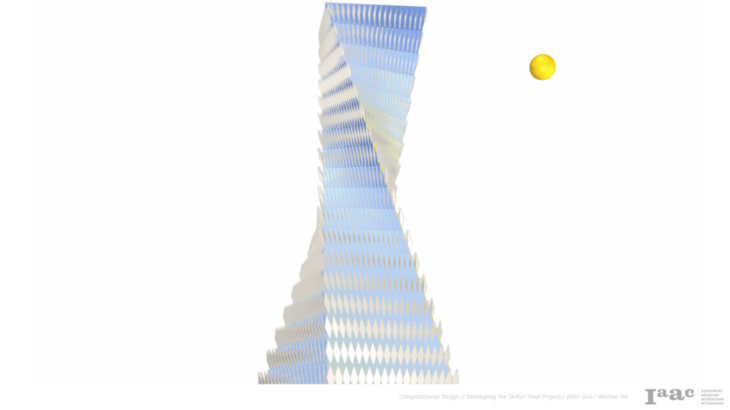
Final Render:
A preliminary rendered view of the tower.
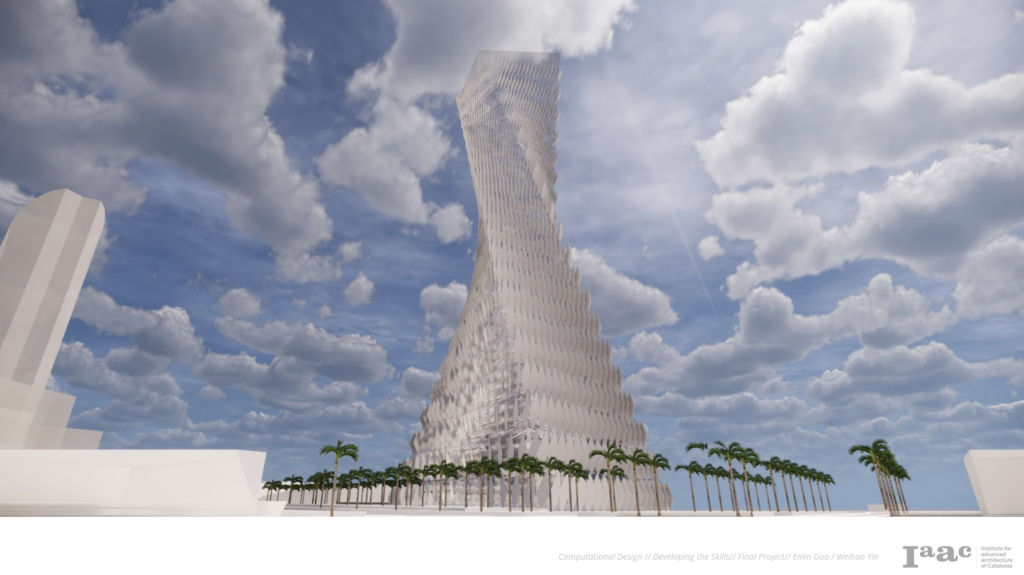
Project Animation:
A video showing the process of the galapagos analysis, the basic reaction of the facade, and a preliminary rendered animation of the project on site.
Credits:
OPTIMIZED TOWER ON BARCELONETA is a project of IAAC, the Institute for Advanced Architecture of Catalonia, developed during the Master in Advanced Architecture (MAA01) 2021/22 by students: Enlin Guo, Weihao Yin; Senior Faculty: David Andrés Lèon; Faculty Assistant: Ashkan Foroughi; and Student Assistants: Uri Lewis Torres.
